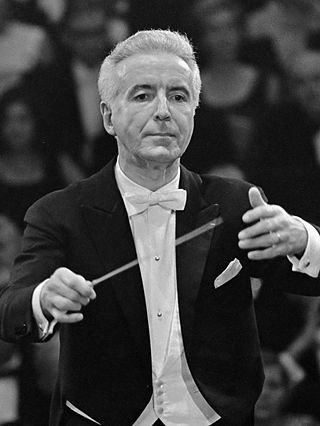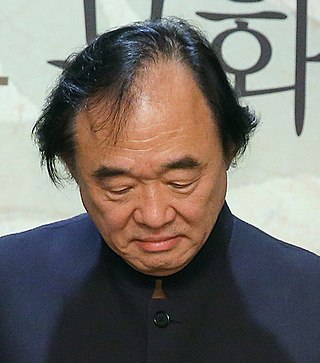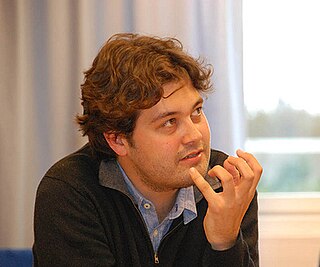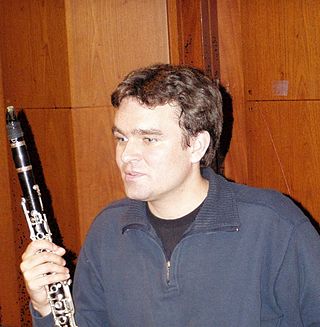
Roméo et Juliette is a seven-movement symphonie dramatique for orchestra and three choruses, with vocal solos, by French composer Hector Berlioz. Émile Deschamps wrote its libretto with Shakespeare's play as his base. The work was completed in 1839 and first performed on 24 November of that year, but it was modified before its first publication, in 1847, and modified again for the 2ème Édition of 1857, today's reference. It bears the catalogue numbers Op. 17 and H. 79. Regarded as one of Berlioz's finest achievements, Roméo et Juliette is also among his most original in form and his most comprehensive and detailed to follow a program. The vocal forces are used in the 1st, 5th and 7th movements.

The Frankfurt Radio Symphony is the radio orchestra of Hessischer Rundfunk, the public broadcasting network of the German state of Hesse. From 1929 to 1950 it was named Frankfurter Rundfunk-Symphonie-Orchester. From 1950 to 1971 the orchestra was named Sinfonie-Orchester des Hessischen Rundfunks, from then to 2005 Radio-Sinfonie-Orchester Frankfurt. Prior to 2015, the English translation Frankfurt Radio Symphony Orchestra was used for international tours.

Antoine Tamestit is a French violist.

John Wilton Nelson is an American conductor. His parents were Protestant missionaries.

Jean Fournet was a French flautist and conductor.

Tabea Zimmermann is a German violist who has performed internationally, both as a soloist and a chamber musician. She has been artist in residence of the Concertgebouw Orchestra, the Berlin Philharmonic, and the Bavarian Radio Symphony Orchestra. In 2004, Zimmermann founded the Arcanto Quartet, a string quartet that performed until 2016. Several composers have written music for her, including György Ligeti, and she has made her own version of Bartók's Viola Concerto from the composer's sketches.

Nobuko Imai, is a renowned Japanese classical violist with an extensive career as soloist and chamber musician. Since 1988 she has played a 1690 Andrea Guarneri instrument.
Léon Eugene Barzin was a Belgian-born American conductor and founder of the National Orchestral Association (NOA), the oldest surviving training orchestra in the United States. Barzin was also the founding musical director of the New York City Ballet.

Enrico Pace is an Italian pianist of international renown.

The French composer Hector Berlioz made four attempts at winning the Prix de Rome music prize, finally succeeding in 1830. As part of the competition, he had to write a cantata to a text set by the examiners. Berlioz's efforts to win the prize are described at length in his Memoirs. He regarded it as the first stage in his struggle against the musical conservatism represented by the judges, who included established composers such as Luigi Cherubini, François-Adrien Boieldieu and Henri-Montan Berton. Berlioz's stay in Italy as a result of winning the prize also had a great influence on later works such as Benvenuto Cellini and Harold en Italie. The composer subsequently destroyed the scores of two cantatas almost completely and reused music from all four of them in later works. There was a revival of interest in the cantatas in the late 20th century, particularly Cléopâtre, which has become a favourite showcase for the soprano and mezzo-soprano voice.
Jean-Pierre Wallez is a French violinist and conductor.

Kun-woo Paik is a South Korean pianist. He has performed with multiple orchestras, including the London Symphony Orchestra, the BBC Symphony Orchestra, and the Saint Petersburg Philharmonic.
Vardan Mamikonian is an Armenian pianist, and also a naturalised French citizen.

Lawrence Power is a British violist, born 1977, noted both for solo performances and for chamber music with the Nash Ensemble and Leopold String Trio.
Frederick Craig Riddle OBE was a British violist. He was considered to be in the line from Lionel Tertis and William Primrose, through to the violists of today such as Lawrence Power.

The New Philharmonic Society was a British music society, established in 1852, giving annual series of subscription concerts of orchestral music in London until 1879. The concerts in the first season were conducted by Hector Berlioz.
Amihai Grosz is an Israeli violist. From 1995 to 2009, he was the violist with the Jerusalem Quartet. Since 2010, Grosz has been the Principal Violist of the Berlin Philharmonic.
Les nuits d'été, Op. 7, is a song cycle by the French composer Hector Berlioz, setting six poems by Théophile Gautier. The cycle, completed in 1841, was originally for soloist and piano accompaniment. Berlioz orchestrated one of the songs in 1843 and did the same for the other five in 1856. The cycle was neglected for many years, but during the 20th century it became, and has remained, one of the composer's most popular works. Of the many recordings made in the 20th and 21st centuries, most are of the orchestrated version and are sung by a soprano or mezzo-soprano.
Timothy Ridout is a British violist and 1st Prizewinner of the prestigious Lionel Tertis International Viola Competition.

Jörg Widmann's Viola Concerto was composed in 2015 and premiered on 28 October 2015 with soloist Antoine Tamestit and the Orchestre de Paris under the direction of Paavo Järvi at Philharmonie de Paris.



















